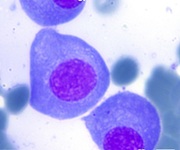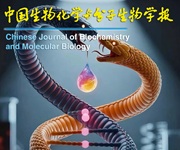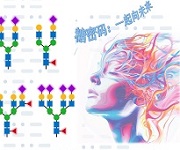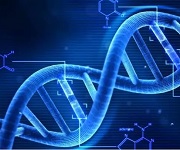Preventing birth defects is an important means of improving population quality. Birth defects are congenital abnormalities in the body or function of newborns, manifested in physical, intellectual, or social impact. The population of children in China is huge, and with the adjustment of the national fertility policy, preventing birth defects has become particularly important. The causes and mechanisms of most birth defects are not clear yet, and effective treatment and intervention strategies urgently need to be studied and developed. The review articles and research results in this column not only inject new knowledge progress into academic exploration in the field, but also provide new direction references for clinical practice, reflecting the intersection and common development trend between birth defect research and cell regeneration therapy. I hope that through this column, more readers can deeply understand the current situation of birth defects and the urgency of prevention and control. I also hope to inspire more researchers to devote themselves to the research of birth defects and cell regeneration, work together to improve the quality of the birth population, and contribute to the healthy development of children in China and even globally.
Sugar, as an important component of living organisms, carries many biological functions: protecting cells, structural components of cells, energy sources and metabolic components, cell to cell recognition, and intracellular signal transduction. The molecular basis of the most common human ABO blood type is determined by the sugar chain structure on the surface of blood cells, while influenza viruses invade host cells through the sialic acid sugar on the host cell surface as a receptor.
Although the importance of sugar has been recognized for a long time, its inherent complexity has caused many technical challenges in research. Firstly, in terms of chemical structure, there are various ways of linking sugar chains; Secondly, the synthesis of sugar chains does not have a template, but is assembled and synthesized by glycosyltransferases, similar to molecular LEGO. Although such sugar heterogeneity can carry more information, it also poses significant challenges for studying its biological functions.
So from the moment of its birth, glycobiology has been destined to be an interdisciplinary field with multiple methods and perspectives. This special issue covers a comprehensive review of the functions of glycobiology from multiple disciplines (life, chemistry, and pharmacy), as well as the latest technical briefings. It aims to report on new technologies and methods in glycoscience research, explain the functions of sugars in different physiology and pathology, and discuss the development of carbohydrate drugs.
Autophagy is a metabolic process in which cells decompose their
own components through lysosomes (or vacuoles) to maintain normal
physiological activities and homeostasis. Autophagy, as an
evolutionarily conserved intracellular degradation pathway, is involved
in many important physiological or pathological processes, such as cell
homeostasis, organogenesis, neurodegeneration, tumorigenesis and
migration. The research on the molecular mechanism and function of
autophagy has become one of the hot biological issues.
Exosomes are tiny vesicles that can be secreted by most cells in
the body. They have lipid bilayers with a diameter of 30-150 nm.
Exosomes can participate in cell communication and material exchange
events, affect the physiological state of cells, and are closely related
to the occurrence and process of many diseases. With more and more
researches on exosomes, researchers have found that exosomes are widely
involved in various biological processes, such as immune response,
antigen presentation, cell differentiation, tumor growth and invasion.
Exosomes carry important signal molecules such as nucleic acids and
proteins, which are widely distributed in various body fluids and can
reflect the characteristics of the source cells. Therefore, exosomes
have the potential to be used as diagnostic biomarkers. At the same
time, because exosomes take into account both the natural and structural
stability of nanoparticles, it is also valuable to use them as carriers
for the development of targeted drugs.
As another important regulatory mechanism in life, the dynamic and
reversible chemical modification of RNA, namely epigenetic
modification, has attracted more and more attention. In recent years,
thanks to the progress of the interdisciplinary high-throughput
sequencing technology, the field of RNA modification has begun to
expand. In 2016, Nature Methods selected epitranscriptome analysis as
the technology of the year. Chemical modification of RNA has become a
hot topic in the field of chemical biology. More and more studies on
chemical modification of RNA will promote the development of the new
field of "epitranscriptomics".
Since the first issue of 2016, our journal has set up the Invited Review column. We carefully invited influential experts in a professional or special research area to solicit contributions. And the experts systematically summarized their research fields, reflected on the latest progress in hot research fields at home and abroad, and provided guidance and suggestions for the development trend of the targeted academic field.
Our journal focuses on creating the Invited Review column, front page headlines, cover articles, editor's notes and authors’ profiles. We hope to build the Invited Review into a bridge for academic exchanges. On the one hand, we can promote the introduction of special experts and their research fields. On the other hand, we can provide a platform for experts in this field to understand each other. Through reading the Invited Review, young scholars and graduate students can quickly grasp the knowledge framework of a certain field and the direction of the development of the field.
In eukaryotic cells, mRNA accounts for about 2% of the genome, and the rest is non-coding RNA. Although non-coding RNA does not have the function of coding proteins, it is widely involved in all aspects of life, such as growth, differentiation, development, immunity, and even plays an important regulatory role in tumor formation. It is one of the research hotspots in the post-genomics era to identify and discover new non-coding RNAs, explore their biological functions and their roles and clinical significance in the occurrence and development of cancer and other diseases.
In order to ensure the orderly progress of biochemical reactions and regulatory processes in cells, the cell interiors are separated so that different biomolecules form a series of compartments. In addition to membrane organelles, there are also membraneless organelles or membraneless particles, which render proteins and nucleic acids with specific functions to gather in different membrane-free organelles, so as to ensure the corresponding biochemical process can be carried out efficiently in a spatial and temporal manner. Recent studies have shown that liquid-liquid phase separation (LLPs) is the main driving force for the dynamic assembly of many intracellular membrane-free organelles (such as p-particle, stress particle, nucleolus and nuclear spot). The research and discovery of the separation behavior of biomacromolecules will provide a new perspective for us to understand many structural and cellular biological phenomena.
---------------------------------------------------------------------------------------------------------------
















